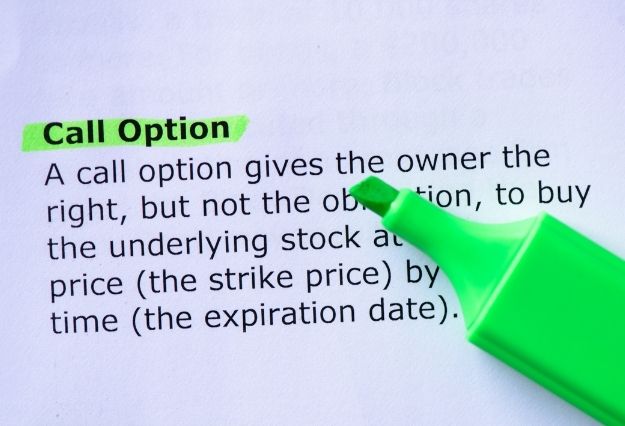Call On Shares Definition
According to the definition in the Companies Act of 2013, a company is a legal entity formed by an association of people or persons who come together for a specific objective under this act or previous company law. SeveralCompany companies such as unlimited companies, companies limited by guarantee, companies limited by shares, etc.
Each Company has shares which are the interest of shareholders of a company, measured by money. A company limited by shares carries share capital that invites shareholders to hold shares within the entity.
Meaning Of Call On Shares
Call on shares is a request made by the company directors which informs the shareholders of the need to pay the Company a certain amount of money as was agreed either partly or wholly. It’s the work of the company directors to place the call notice through the guidance of articles of association of the legal entity.
The unpaid money in somewhat paid shares is seen as shareholders’ liability to the Company which is legally binding. This means the Company has the right to demand the payment anytime through its board of directors when they feel it is essential to pay the liability. Typically, companies collect the share amount during the initial issuing of shares. Even so, a few companies give their shareholders time to pay for the shares in installments, as shown below:
- Payment of some of the shares during application of shares, not less than 5% of nominal share amount.
- You should only make the partial payment of shares during the allotment of shares.
- And lastly, the balance should be paid by the shareholders when the Company, through the board of directors, demandsThe only pros of purchasing the call option are that usually, the risk is capped on premium paid.
Understanding Call Options
What is a call option?—It’s an optional contract that helps the holder of the option by their own volition to acquire 100 shares at a set price, referred to as a strike price until the expiration date.
For instance, a call option contract can allow an option holder the chance to purchase 100 shares of JPMorgan Chase at $100 before the expiration date of 3 months. However, strike prices and expiration dates aren’t limited as there is quite a number to choose from at the holder’s option.
When the value of JPMorgan Chase rises, the option contract price subsequently rises and vice versa. The call option purchaser can hold on to the contract up to the expiration date and then allow delivery of the placed 100 shares. The option purchaser may also decide to sell the contract before the expiration date at the contract’s current market price.
However, you have to pay to get a call option known as the premium. Its money is issued to cater for the rights the call option avails. When the asset’s expiration date is below the strike price, the call purchaser loses his premium rights, a massive loss.
If the asset’s present market value exceeds the strike price on expiry day, you will calculate the profit based on the difference of prices negating the premium. The sum is subsequently multiplied by the number of shares the purchaser has access to.
For example, if JPMorgan Chase trades at $110 and the expiry time comes, the option strike price will be $100, which means the option costs the purchaser $2 per share. The profit will be $100+$2 then you minus $110. If the purchaser only acquired one option contract, the payoff equals $8 multiplied by 100 shares.
If JPMorgan Chase is trading under $100, the purchaser won’t want to buy shares at $100 each, making it worthless. I say that because the purchaser will be losing $200 or $2 per share for every contract they took. The good thing is that you can play by your own set of rules.
Purposes of Call Options
Call options are usually effectuated in three key ways: through tax management, income generation, and speculation.
Using Options for Income
Many investors who have identified call options use it as a source of income, and it is effectuated through the covered call strategy. The strategy mainly revolves around owning stock while still perfecting the writing of a call option or allowing specific people to buy your stock.
It’s no secret that most investors acquire the option premium but hope that it expires below the strike price. The approach always helps in the acquisition of additional income. However, it’s also risky as it can limit profits if the stock price goes up.
However, the covered calls are effective as it helps the option buyer acquire at a good or lower price when the stock rises. Generally, this shows that the option writer cannot benefit from the stock development above the strike price.
Using Options for Speculation
Using option contracts has allowed buyers to procure significant stock exposure for a lower price. They are mainly used in isolation as they offer substantial acquisition when the stock rises. The only pros of purchasing the call option are that usually, the risk is capped on premium paid. However, it’s elementary for it to lead a buyer to a 100% premium loss if the call option becomes worthless when the stock price doesn’t move beyond the strike price.
There’s also a huge possibility that most investors can simultaneously sell and buy various call options, making a call spread. The potential loss and profit are capped from the strategy; however, the only pros of purchasing the call option are that usually, the risk is limited on premium paid. They become cost-effective than one call option. This is due to the offsets of the premium when it is collected.
Using Options for Tax Management
Investors have become creative as they now utilize options to replace portfolio allocations without selling or buying the underlying security.
For instance, investors may take 100 shares of JPMorgan stock of their own volition, which might lead them to unrealized capital attainment. Most shareholders may not want to activate a taxable event, so they may use other ways to reduce exposure to the fundamental security without selling.
Whereas gains from placed options and calls are fairly taxed, their reception, specifically by the IRS, is more multiplexed due to the various and multiple options. In this situation, the only cost that accrues the shareholders to participate in the strategy is the options contracts.
Difference Between Intraday Trading and Delivery Trading
The central gulf between delivery trading and intraday is that selling and buying of shares in one trading day is simply intraday trading. Still, if that’s not the case, then it automatically becomes delivery trading. Moreover, the strategies of delivery and intraday trading are like day and night.
The truth is that it may be challenging for you to distinguish between delivery and intraday trading without digging deep into how they work. Let’s dive into the two trading options and compare them.
What Are Intraday Trades?
The main point of intraday trading entails selling and buying a stock in one trading session, i.e., it should be the same day. If you’re unlucky to square your position come to the end of the day, be sure your stock will be sold automatically using the day’s adjourning price operating brokerage plans. This calls for you to check with your broker regarding automatic selling.
Traders commence intraday trading by placing the target price for the stock and purchasing when it’s below your target. Similarly, traders can sell the stock if or when it hits the mark. Or when they foresee the stock not hitting the target before the day’s market adjourns.
Advantages And Disadvantages Of Intraday Trades
The pros and cons of intraday trading are essential if you want to distinguish it from delivery trading. So let’s look at intraday trading advantages and disadvantages:
- Reduced capital: Most intraday traders prefer margin funds picking positions. Through this, traders can initiate a considerable trade by paying a limited amount upfront. They then wait for their brokers to fund the remaining trading funds, which means traders will have a more sustainable position than their capital allows. Subsequently, it interferes with the profit.
- High liquidity: All intraday trading positions have to be wound up in a single working day. Subsequently, this shows that the invested capital is available for a few hours. The little allocated time makes traders book profits Swifty but only based on price fluctuations.
- Low brokerage: It makes brokers demand lower commissions in contrast to what they would have required in delivery trading.
- No overnight risk: In intraday trading, all trading is done before the market is adjourned. So, the traders are safer and better if the market shifts after the closing time.
Disadvantages Of Intraday Trades
- Risk of loss: The availed time to end with good profits is limited, and when the market is shifting unfavorably in intraday trading, many traders will incur massive losses. The loss is generally magnified due to high exposure.
- Regular monitoring: To succeed in intraday trading, you have to track the market developments effectively. It involves toggling in screens to check various charts and data. Effective monitoring will alert you on when to enter or exit the market. However, it requires deep knowledge to analyze the market, which is stressful successfully.
- There are no corporate benefits: Many intraday traders will admit to you that they don’t benefit a lot. They aren’t involved in delivering the stocks, which means they don’t own the assets.
What Are Delivery Trades?
Delivery stock is simply the addition or inclusion of your purchased stock to the Demat account. You hold them until you see an opportunity to sell, either after days, weeks, months, or even years. It gives you full stock ownership.
Advantages And Disadvantages Of Delivery Trades
We’ve already seen the pros and cons of intraday trading, so let’s take a look at what to expect in delivery trading.
Advantages Of Delivery Trades
- No time limit: Unlike intraday trading, delivery traders enjoy the freedom of holding stock for the time they want. It can be months or even years. If the stock performs poorly in a small time frame, you can’t book losses immediately as things might change.
- Losses are limited: When acquiring shares for delivery trading, the entire share valuation is paid upfront. So when the trade goes haywire, you will limit the losses on the buying price. However, margin traders are highly prone to excessive losses if they have a dodgy trade.
- Corporate benefits: When traders buy delivery shares, they are instantly initiated as part-company owners. They are eligible to receive interest payments and dividends. They also get bonuses and enjoy other rights available.
Disadvantages Of Delivery Trades
- Low liquidity: Most delivery traders don’t enjoy the advantages of margin funding. They have to give out the whole amount when acquiring stocks. The paid amount is generally blocked until the sale of the stock.
- No leverage: The trading activities of delivery traders are limited due to the amount they have. They don’t enjoy high leverage, which interferes with the enormous demands that you might experience.












